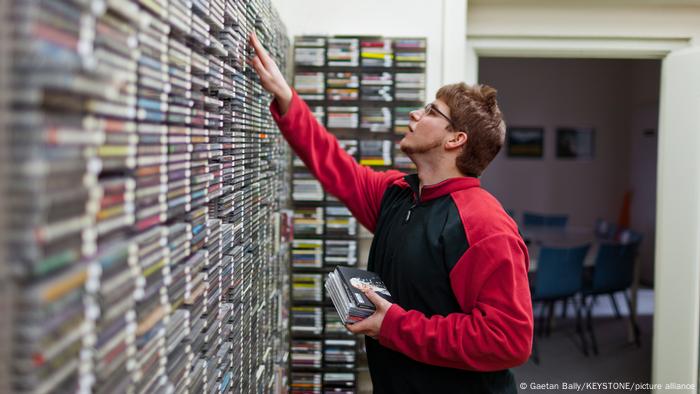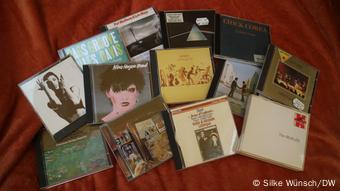
Far from 1985. We sat in the auditorium and listened in fascination to the sounds of “Friday Night In San Francisco” – the legendary guitar album by Al di Meola, Paco de Lucia and John McLaughlin, who were among the best guitarists of the time. The sound is crystal clear, the guitar picks come out of the speakers so clearly it feels like you’re sitting in a concert hall. Although the music sounds moderately loud, everyone has the feeling that we hear every note, every finger that plays the strings, even the musicians’ own breathing. This is an unforgettable “acoustic show” – no rustling of a moving tape or cassette, no rattling and crackling of a long-playing record. For most of us, this was our first sonic encounter with CD, which in the West is known as Compact Disc (CD).
From Beethoven to ABBA
The CD as a storage medium has been around for a long time, the debate was over how much music can be downloaded onto it. Ultimately, it was decided that the CD’s running time should be long enough to accommodate one of the world’s most famous classical works, Beethoven’s 9th Symphony in a 74-minute version by German conductor Wilhelm Furtwängler.
In 1981, this record was presented at the Berlin Radio Exhibition. The world’s first commercially produced discs rolled off the assembly line on August 17, 1982 in Hannover. Legend has it that ABBA’s album “The Visitors” was recorded on them. It may also have been a recording of Richard Strauss’ “Alpine Symphony”, conducted by Herbert von Karajan, who admitted to being a big fan of the CD. Another version says that Chopin’s waltzes were recorded on early CDs.
Champagne for everyone!
Soon, corporations Sony and Philips released the first CD players – CD players – for today’s money – about 1200 euros, which at the time was not affordable for many people. The two companies, which were developing the player together, soon saw the fruits of their work: the business with CDs and players, as they say, soared.
On October 1, 1982, a Japanese CD player appeared for sale.
Champagne corks were also skyrocketing in the music industry: in 1984, 3 million CDs were sold in Germany alone, and in 1989, 54 million! And this at very high prices: a CD cost 30-40 DM (about 15-20 euros) and therefore more than double the price of a long-lasting vinyl record. At the same time, no one knew exactly how long digital data would be stored on disks.
like weeds
Over the years, prices for CD players and CDs became more affordable, and record stores were forced to restructure their operations as music lovers began trading their vinyl collections for CDs. Previously, these beloved discs produced crisp sounds compared to CDs – so much so that you wanted to hear music without the background noise of CDs.
We spent exorbitant amounts on new CDs by Pink Floyd, Prince, The Beatles, bought jazz, classical music and listened to more and more pop, rock, soul and funk. Next to the record racks, CD racks were created, which quickly replenish themselves and are everywhere in living rooms like weeds. Records and turntables became covered in dust and ended up in basements.
What to do with thousands of CD collections?
Over the years, CDs accumulated so much that they themselves were forced to move to basements or garages – after vinyl. What to do with the boxes?
Throw away? Caution: don’t forget about sorting waste – plastic covers in the plastic bin, leaflets – into used paper, and CDs themselves are rightly considered hazardous waste today. Where are they? To a special landfill!

Shelves with thousands of CDs
Or maybe it’s better to give others CDs you don’t need, put boxes with them on the side of the road – let whoever wants to take them for themselves. It is impossible to sell them – used ones are practically worthless today.
And you can make art! As a creative solution, we decided to cover the ceilings of the studio rooms in DW’s office with CDs. My colleague and I spent every spare minute taping silver circles to the ceiling. We were helped in this by our volunteers with interns.
Finally, before the last move, a stranger agreed to take our collection, which did not exceed 1000 CDs.
We still listen to music from CDs at parties. People look at us in surprise as we bring our luggage with the necessary belongings: two DJ CD players, a mixer, two thick folders of self-made CDs and a wooden box with originals from the past. This is what is called old school. Other DJs use laptops, store their music on a large hard drive and play it back with software. It sounds tempting – as is listening to music through Spotify & Co, which is relentlessly approaching the end of the CD era.

old cds
More appealing than Spotify playlists, however, vinyl records are once again gaining popularity among music lovers who have bid farewell to their CD collections. For example, in 2021, more vinyl records were sold in the US than CDs – the first time since 1991! And the prices, as CDs used to be, are from 30 to 40 euros for a disc. And it is normal that today vinyl costs more than twice as much as a CD. History repeats itself, because it is not in vain that they say that everything that is new is an old forgotten!
Source: DW
Lori Barajas is an accomplished journalist, known for her insightful and thought-provoking writing on economy. She currently works as a writer at 247 news reel. With a passion for understanding the economy, Lori’s writing delves deep into the financial issues that matter most, providing readers with a unique perspective on current events.